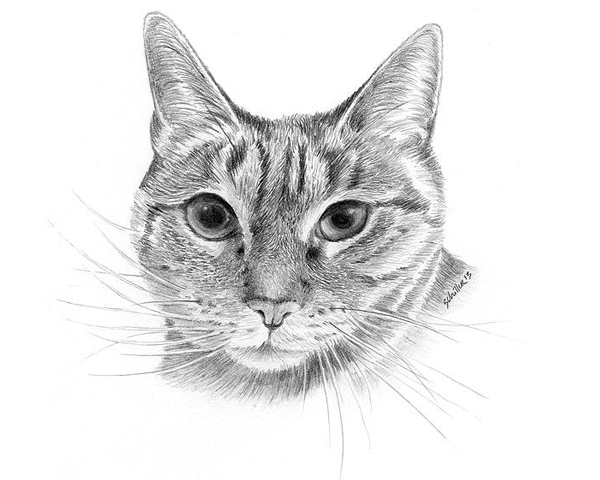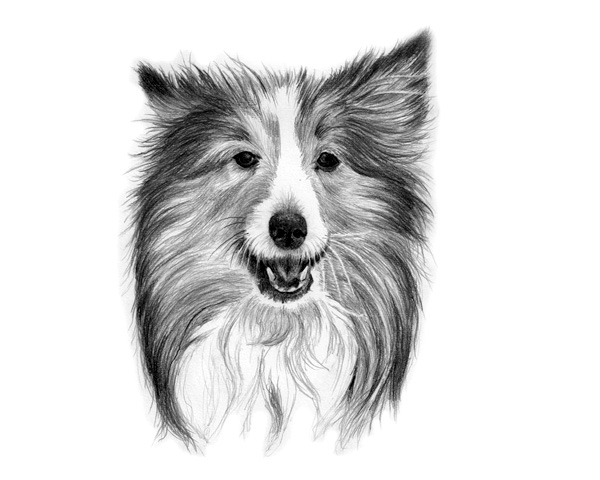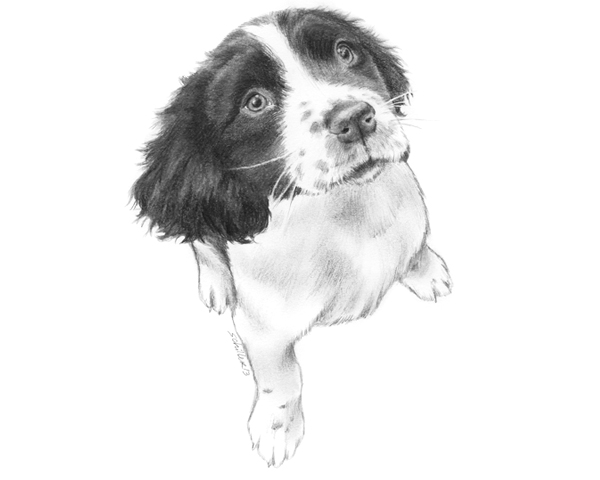Knowledge of animal anatomy is the key to drawing realistic pet portraits. It is what makes a drawing come alive, as opposed to being just a likeness.
As a former zookeeper and veterinary technician, I am fortunate to have come face-to-face with many different animals – wild, exotic and domestic. Seeing them up close, and getting to touch and hold them, has served to be an invaluable reference for my pet portraits. Here are a few considerations I use to create realistic pet portraits:
1) Eyes – the eyes are the soul of the portrait, so if they’re not right the whole portrait suffers. Cat eyes are especially challenging because of the subtleties of color and depth in the iris. I use colorless blenders and paper stumps, with varying pressure, for subtle shading differences. Also, contrasting the dark shadows from the upper eyelid with the bright glint off the cornea helps give the eye its shape.

2) Coat – There are so many characteristics to consider when drawing animal fur: color, markings, pattern, texture, length. Again, a good working knowledge of the nature of fur is helpful in creating a realistic drawing. Some animals have an undercoat of short, soft fur beneath a top layer of longer, coarser hairs. I use harder pencil leads (in the “H” range) first, because they give a lighter and finer appearance. Top hairs are often thicker and darker, so I use softer leads (in the “B” range) last.

3) Nose – Dog noses can be particularly tricky to draw: they are soft, rubbery, often wet and have intricate folds and textures. It may be unconventional, but I often pencil in the darkest areas first (the nares), being careful to leave the paper white where the light reflects the brightest. I use a kneaded eraser, or an electric one, to create the bumpy texture of the nose-pad.
 As an animal artist, you will benefit tremendously from getting to know your subject firsthand. And with practice and persistence, the animals you draw will look like they might walk off the page!
As an animal artist, you will benefit tremendously from getting to know your subject firsthand. And with practice and persistence, the animals you draw will look like they might walk off the page!
Guest artist/author Scott Schiller is a pet portrait artist with over 20 years’ experience. You can visit his website to view his work: www.thepetsketcher.com








I have a very obliging collie dog who will show me his nose (and other bits of him) when I am trying to do a portrait from a series of photos for a commission. Noses don’t come out well in a photo. Too often they are just a dark blob! By comparing the dark blob to Jasper’s nose I can see how the client’s dog is different from his. I would not be able to achieve good results without his help.
Jen, yes a live model is much better than a photo. As you know, each individual animal has its own unique characteristics! Thanks for sharing your extra tip 🙂
Loves this post! I have recently gone back to drawing the subjects of my very first childhood drawings– horses! And man, especially with such muscular animals the more you study the subject, the more detail you see. Its fascinating. Really helpful tips in this guest post. Keep the animal stuff coming. A follow up on how to paint fur/feathers/scales would be excellent as well!
Hello Sandra, thanks for the great feedback and future post ideas. I appreciate you taking time to comment.
~Lori